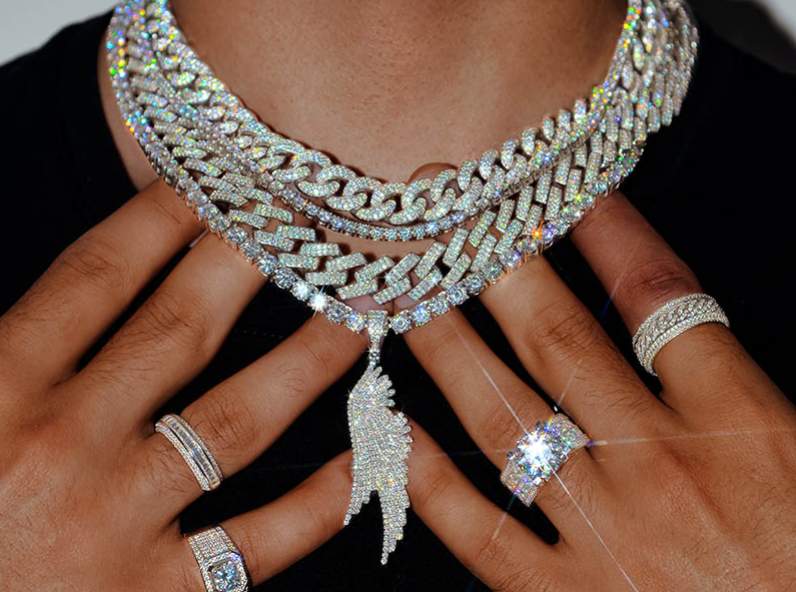
In this post, I explore the intriguing concept of "Brand Archetype." Discover how this powerful marketing tool can breathe life into your company's personality and create lasting emotional connections with your customers.
The identity of a brand and a company goes beyond a logo or a set of colors. It's the essence that sets it apart in the market and makes it memorable. One of the most fascinating aspects of building a brand identity is the use of archetypes, which are symbolic characters representing specific values and characteristics. Let's delve into the world of brand archetypes and how they can help your company stand out!
The term "Brand Archetype" comes from the Greek words "archein," meaning "original," and "typos," meaning "pattern" or "type." Thus, we understand an archetype as a pattern responsible for shaping people, objects, concepts, and creations in a general sense.
What Are Brand Archetypes?
Brand archetypes are universal and timeless patterns that brands can adopt to communicate who they are and what they represent. They have their roots in psychology, mythology, and human culture, creating a deep connection between the brand and its audience. There are 12 main archetypes, each with its distinct characteristics.
How to Choose the Right Archetype?
Self-Knowledge of the Brand Before choosing an archetype, it's essential to understand your company's personality. Ask yourself: What is our mission? What are the most important values for us? How do we want customers to perceive us? Answering these questions will help identify the most suitable archetype.
The 12 Brand Archetypes
These are 12 brand archetypes commonly recognized as important in defining brand patterns.
The Hero The Hero is courageous, determined, and always seeking to overcome challenges. Brands like Nike embody this archetype, encouraging their customers to overcome obstacles.
The Lover The Lover represents passion, sensuality, and deep emotional connection, expressed in visual identity through seductive colors and elegant design. Brands like Victoria's Secret incorporate this archetype, promoting lust and seduction.
The Sage The "Sage" archetype represents the relentless pursuit of knowledge and wisdom. It is characterized by a desire to deeply understand the world and share that knowledge to enlighten others. Brands like National Geographic adopt this archetype, sharing valuable information.
The Innocent The "Innocent" archetype personifies purity, simplicity, and optimism. It sees the world as a good place and believes in the goodness in all situations, often maintaining a naive and hopeful view of life. Disney is a classic example of this archetype, offering children's entertainment.
The Explorer The "Explorer" archetype is adventurous, curious, and seeks new experiences. It craves discoveries, freedom, and adventures, always ready to explore unknown territories and expand horizons. Brands like GoPro embody the quest for the unknown.
The Outlaw The "Outlaw" archetype is bold, rebellious, and challenges social conventions. It pursues freedom at any cost, often representing the breaking of established rules and norms. Harley-Davidson is an example, promoting the feeling of freedom on the open road.
The Creator The "Creator" archetype is innovative, imaginative, and expressive. It constantly seeks inspiration to create, whether in the world of arts, technology, or business, and is focused on turning its visions into reality. Brands like Apple are known for their constant pursuit of new ideas.
The Ruler The "Ruler" archetype is a leader, authoritative, and seeks to control and organize effectively. It focuses on governance, structure, and management, seeking stability and order in its endeavors. Luxury brands like Rolex embrace this archetype.
The Caregiver The "Caregiver" archetype is compassionate, attentive, and dedicated to helping others. It deeply cares about the well-being and happiness of those around it, often playing supportive and caring roles. Charity organizations and brands like Dove often adopt this archetype.
The Artist The "Artist" archetype is creative, expressive, and constantly seeks authenticity and originality in its creations. It is driven by a passion for art and the pursuit of beauty in all forms of expression. Fashion and art brands like Kenzo often incorporate this archetype.
The Court Jester The "Court Jester" archetype is known for its funny, eccentric, and playful nature. Brands that incorporate this archetype seek to entertain, amuse, and add a touch of humor to the customer's experience. Entertainment companies or family restaurants like Burger King embrace fun.
The Everyman
The "Everyman" archetype represents the common person, identifiable by everyone. It personifies simplicity, empathy, and universal connection, often serving as the starting point for the audience's identification with stories and characters. Brands like IKEA focus on products that meet the needs of ordinary people worldwide.
Applying the Brand Archetype
Building Narratives Creating engaging narratives is a powerful skill that can effectively convey messages and establish emotional connections. Here are some fundamental steps for building effective narratives:
Define your objective: Begin by determining what you intend to achieve with the narrative. Are you telling a story to entertain, educate, inspire, or persuade? Having a clear objective will help shape the narrative.
Know your audience: Understand who your audience is and what motivates them. This will allow you to tailor the narrative to better connect with your viewers.
Create compelling characters: Develop captivating characters with whom viewers can identify or emotionally invest. Well-constructed characters make the narrative more engaging.
Establish conflict: Every good narrative has some form of conflict or challenge to overcome. This creates tension and maintains your interest.
Develop a plot: Create a solid narrative structure with a beginning, middle, and end. Introduce the conflict, develop the story, and ultimately resolve the conflict satisfactorily.
Use Emotional Elements: Explore emotions that resonate with you and your audience, whether through drama, empathy, humor, or inspiration. Emotions are a fundamental part of engaging storytelling.
Create Twists and Surprises: Being surprised by plot twists can maintain your interest and engagement.
Be Visual and Sensory: Use vivid and detailed descriptions to paint vivid mental images in your mind. This helps create a deeper connection with the story.
Maintain an Appropriate Pace: Control the narrative's pace to keep your interest. Sometimes, it's necessary to speed up the action; other times, it's important to slow it down to explore emotions and reflections.
Deliver a Message or Moral: Many narratives have an underlying message or lesson to be learned. Ensure that this message is clear and well-integrated into the story.
Review and Refine: After writing the narrative, review it carefully to eliminate inconsistencies, improve flow and clarity, and ensure it achieves your objectives.
Test with the Audience: If possible, test your narrative with a group of viewers or readers to obtain feedback and make adjustments as necessary.
By following these steps and honing your narrative-building skills, you will be better prepared to create engaging and effective stories in various contexts, from creative writing to business communication and presentations.
In a world where brands compete for consumer attention, brand archetypes offer a unique way to stand out. By incorporating a deep and meaningful personality into your company, you can create lasting emotional connections with your target audience. Therefore, choose wisely and tell stories that captivate and inspire.
By applying principles of engaging narrative construction in design and communication, you can create pieces that not only inform but also captivate and inspire your audience. This approach is effective for creating visual stories that stand out and leave a lasting impression. I will address this in the next post!
Frequently Asked Questions (FAQs)
What are the benefits of using a brand archetype?
Using a brand archetype helps create a distinctive identity for your company, making it more memorable and establishing an emotional connection with your customers.
Can I change my brand's archetype after choosing it?
While it's possible, changing your brand's archetype can be risky because it may confuse customers. It's important to make a careful choice from the beginning.
How can stories be used to apply a brand archetype?
Stories can be used to personify the chosen archetype, highlighting its characteristics and values through engaging and meaningful narratives.
Do companies combine multiple brand archetypes?
Yes, some companies combine elements from different archetypes to create a unique and complex brand identity.
What should I do if my company doesn't fit into any of the mentioned archetypes? In that case, you can create your own brand archetype, as long as it is authentic and resonates with your values and goals.













